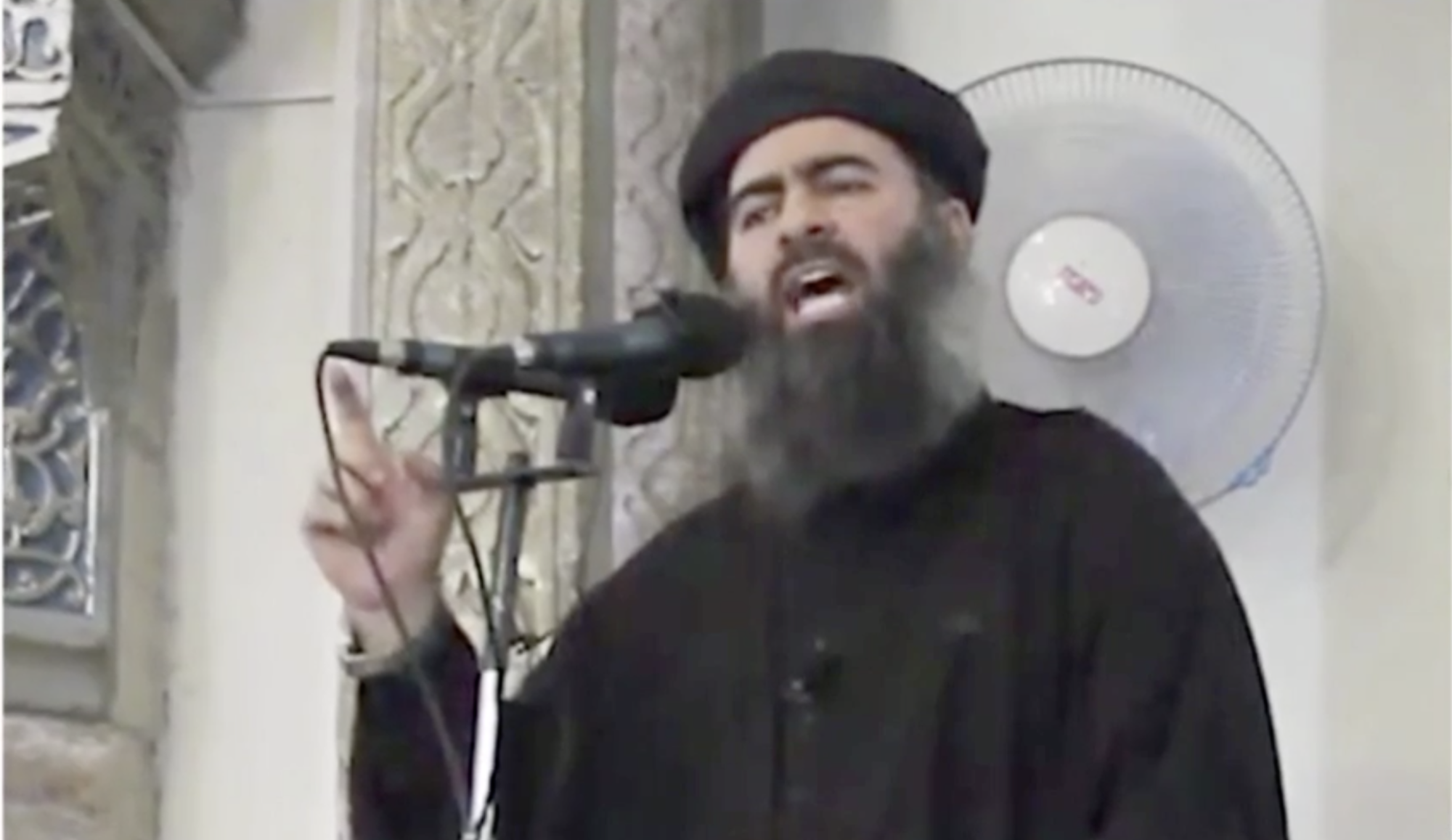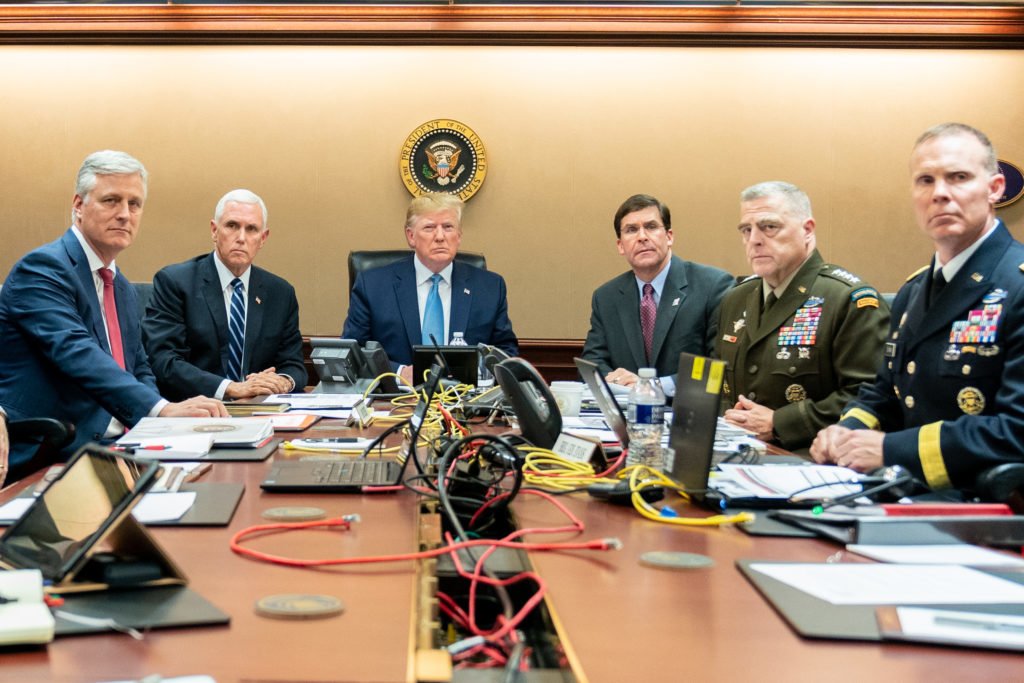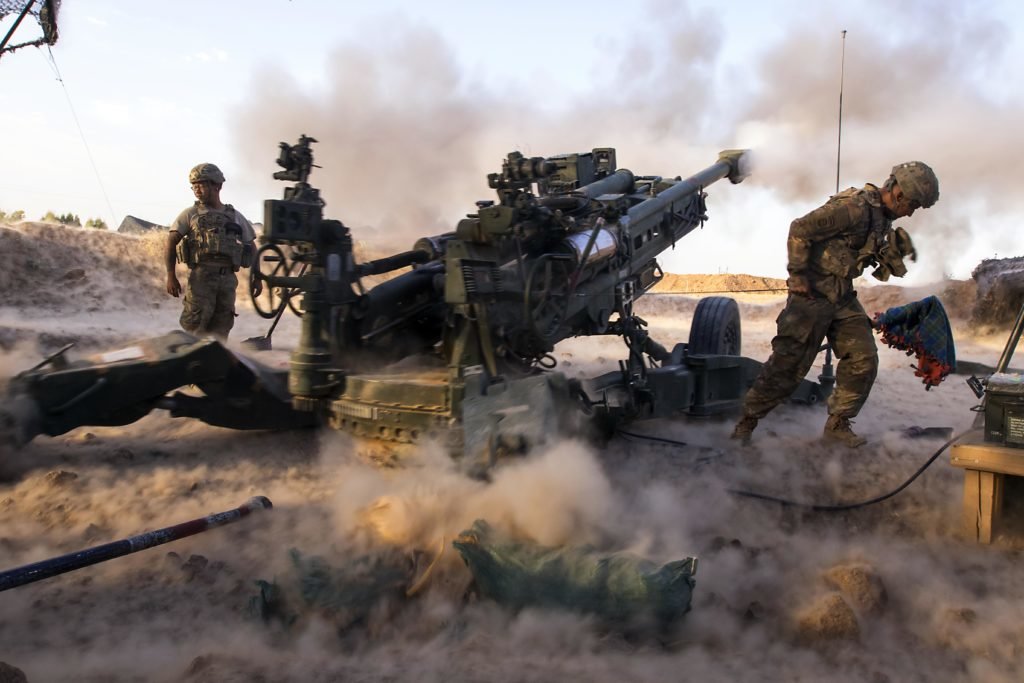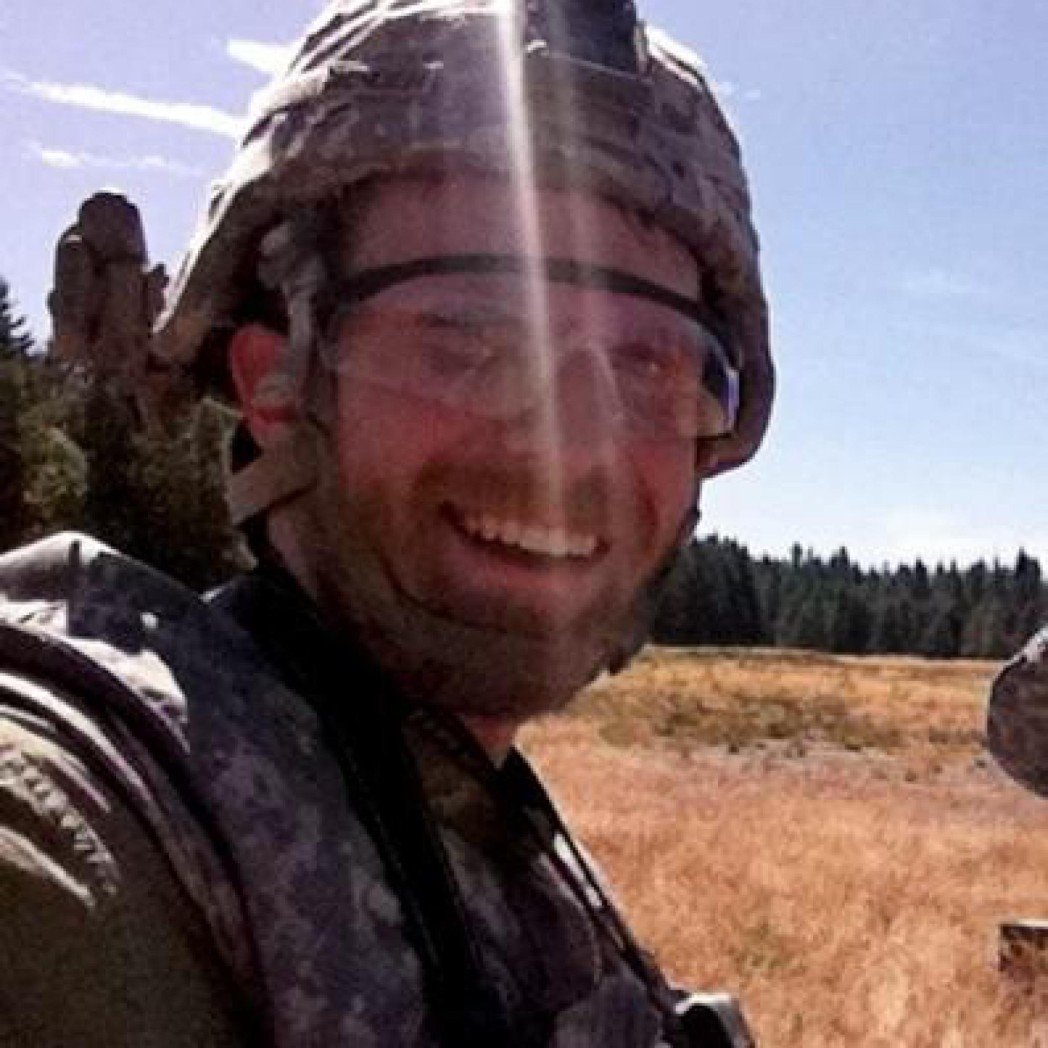
screen shot from fox news video
Over the weekend, members of the U.S. Army Delta Force and 75th Ranger Regiment tracked down ISIS leader Abu Bakr al-Baghdadi in Syria’s Idlib province near the Turkish border during Operation Kayla Mueller. He apparently died after detonating a suicide belt, killing himself and three children. It was the culmination of a long manhunt tracking a target who went by many names over the years and involved many dangerous missions by American troops, spies, and local allies.
Al-Baghdadi remains an enigmatic figure, but his real name is believed to be Ibrahim Awad Ibrahim al-Badri. Despite conflicting accounts, he’s believed to have been born near Samarra, Iraq, in 1971. Most who knew him in his youth recalled him as shy and unremarkable. He was deemed unfit for military service due to poor eyesight, which kept him out of the bloody Iran-Iraq War. He pursued Quranic studies and, by most accounts, eschewed violence in his younger days. He liked soccer and leading prayer sessions.
It’s unclear where al-Baghdadi’s path to radicalization began. Some believe he had already become an Islamist revolutionary under Saddam Hussein’s rule — a narrative ISIS has tried to reinforce but several Iraqis have disputed. According to some accounts, al-Baghdadi helped found the militant group Jamaat Jaysh Ahl al-Sunnah wa-l-Jamaah (JJASJ) after Operation Iraqi Freedom began in 2003, and he supposedly served as head of the group’s Sharia committee.

U.S. forces arrested al-Baghdadi in February 2004 near Fallujah and held him at the infamous Abu Gharib prison’s Camp Bucca as a “civilian internee” under his real name. Records indicate that he was recommended for release in December 2004 after officials deemed him “low level,” but former Camp Bucca commander Colonel Kenneth King claimed in an interview with the Daily Beast that he recalled releasing him in 2009.
Either way, by 2010 al-Baghdadi had become heavily involved with the Islamic State of Iraq (also known as Al Qaeda in Iraq). On May 16, 2010, ISI announced that al-Baghdadi had become the leader of the group following the death of his predecessor, Abu Omar al-Baghdadi. He quickly gained a reputation for ruthlessness as he oversaw several large bombings of mosques and assassinations of Iraqi politicians.
After U.S. Navy SEALs killed Usama Bin Laden in 2011, Baghdadi vowed retribution and launched a bombing campaign across the country that killed scores of Iraqis.
It was the attacks against the Yazidis, who fled to their sacred Mount Sinjar, that prompted Obama to authorize U.S. military force against ISIS and saw international troops to return to Iraq — as well as conduct operations in Syria.
By 2013, the Syrian Revolution had devolved into a bloody civil war. ISI moved several of its fighters into the country and declared itself the Islamic State of Iraq and Syria (ISIS) and gained a reputation as one of the best-funded and best-equipped groups on the ground — but also the most brutal.
Some rebel groups cooperated loosely with them to fight the regime, but many were wary of the large proportion of foreign jihadists in their ranks. Many rebels actually believed that the regime was using ISIS as a means to undermine their revolution by tainting the pro-democracy fighters and activists in the public eye. Former regime officials have even admitted to doing exactly that.
However, in the summer of 2013, President Barack Obama called off an operation at the last minute that would have supported rebels fighting in Latakia province after the Syrian regime crossed the “red line” of using chemical weapons. After that, some rebels believed they had no choice but to work with ISIS and other jihadists to survive.

There was also a rift between ISIS and the Al Qaeda-aligned Syrian group Nusrah Front. In 2014, al-Baghdadi defied orders from Al Qaeda emir Ayman al-Zawahiri that ISIS be abolished and that he and his followers focus their activities in Iraq. ISIS began fighting Al Nusrah and took over the Syrian city of Raqqa from Al Qaeda fighters, making it their capital. ISIS was growing, recruiting jihadists from around the globe.
ISIS began pushing back into Iraq and seizing territory. Fighters took over Fallujah in Al Anbar province with little resistance. By June, ISIS had taken over over Mosul — Iraq’s second largest city. In July 2014, al-Baghdadi appeared in a video addressing a crowd at the Great Mosque of al-Nuri in Mosul. He declared himself caliph of the Islamic State and proclaimed that Muslims around the globe should support him.
ISIS began expanding into the Nineveh plains and launched a genocidal campaign against those the group deemed infidels and apostates. They killed Shia Muslims and forced Sunni Muslims to live by their rigid interpretation of Sharia. ISIS publicly executed Iraqis and Syrians who failed to live up to these expectations, often in gruesome videos shared across the globe. Christians were regularly subjected to persecution, violence, and death but could survive if they paid a tax to the Caliphate — though many chose to flee.
But the worst violence was doled out to the Yazidis, a religious minority in Northern Iraq who have weathered centuries of discrimination. ISIS killed thousands of people and took women and girls as sex slaves. It was the attacks against the Yazidis, who fled to their sacred Mount Sinjar, that prompted Obama to authorize U.S. military force against ISIS and saw international troops to return to Iraq — as well as conduct operations in Syria. The group began beheading Western hostages in retaliation.
In addition to having several wives, al-Baghdadi maintained a number of personal Yazidi sex slaves. In August 2015, American officials alleged that al-Baghdadi had also claimed American aid worker-turned-hostage Kayla Mueller as his “wife” and raped her repeatedly, accounts later backed up by escaped Yazidis. ISIS media later claimed that a coalition air strike killed Mueller, but a former Yazidi sex slave told the BBC that ISIS fighters murdered her.
There have been countless attempts to take down al-Baghdadi, and his death had been previously reported more than once — only for him to resurface. He was finally located based on intelligence obtained by Iraqi intelligence and Syrian Democratic Forces members. That his death was in Syria’s Idlib province is significant.
Reports are emerging that Al-Haj Abdullah Qardash, a former Iraqi Baathist army officer known as “The Professor,” has succeeded al-Baghdadi as the leader of ISIS.
He was far away from Eastern Syria, where his Caliphate had ruled, and was hiding just miles from the Turkish border. The area is controlled by Turkish-backed forces — the very forces that President Donald Trump said will take responsibility for fighting ISIS and holding prisoners after Kurdish SDF fighters leave areas along the border. The abrupt withdrawal of U.S. troops apparently forced the raid to proceed ahead of schedule as officials worried they would lose access to local allies and informants who made the operation possible.
Reports are emerging that Al-Haj Abdullah Qardash, a former Iraqi Baathist army officer known as “The Professor,” has succeeded al-Baghdadi as the leader of ISIS. The militants have spent the summer regrouping in Iraq and Syria, and an unknown number of ISIS prisoners have taken advantage of the recent Turkish invasion of Northeast Syria to escape. Al-Baghdadi is dead, but this isn’t the end of ISIS.

Kevin Knodell is a freelance journalist and author. His work has appeared at Foreign Policy, Playboy, Soldier of Fortune, and others. He’s the associate producer of the War College Podcast and a former contributing editor at Warisboring. He’s the co-author of the graphic novels The ‘Stan and Machete Squad, and he currently writes the Acts of Valor comic series for Naval History magazine.
BRCC and Bad Moon Print Press team up for an exclusive, limited-edition T-shirt design!
BRCC partners with Team Room Design for an exclusive T-shirt release!
Thirty Seconds Out has partnered with BRCC for an exclusive shirt design invoking the God of Winter.
Lucas O'Hara of Grizzly Forge has teamed up with BRCC for a badass, exclusive Shirt Club T-shirt design featuring his most popular knife and tiomahawk.
Coffee or Die sits down with one of the graphic designers behind Black Rifle Coffee's signature look and vibe.
Biden will award the Medal of Honor to a Vietnam War Army helicopter pilot who risked his life to save a reconnaissance team from almost certain death.
Ever wonder how much Jack Mandaville would f*ck sh*t up if he went back in time? The American Revolution didn't even see him coming.
A nearly 200-year-old West Point time capsule that at first appeared to yield little more than dust contains hidden treasure, the US Military Academy said.












